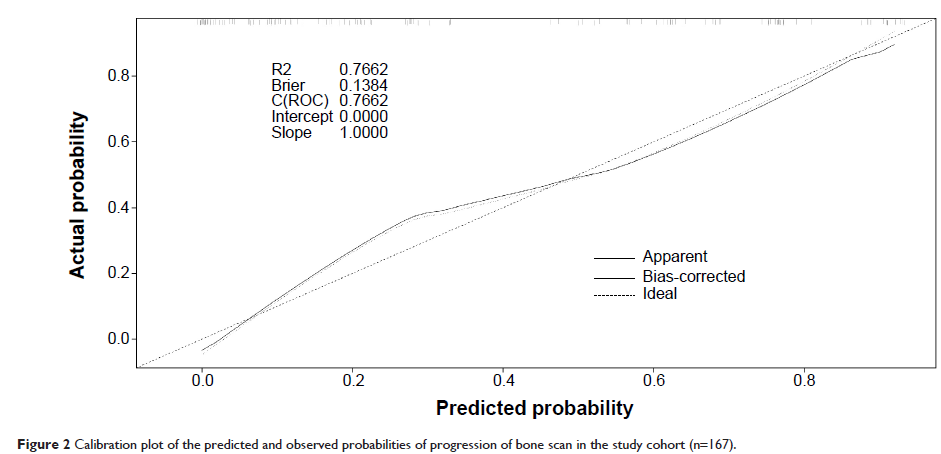109669
论文已发表
注册即可获取德孚的最新动态
IF 收录期刊
- 3.4 Breast Cancer (Dove Med Press)
- 3.2 Clin Epidemiol
- 2.6 Cancer Manag Res
- 2.9 Infect Drug Resist
- 3.7 Clin Interv Aging
- 5.1 Drug Des Dev Ther
- 3.1 Int J Chronic Obstr
- 6.6 Int J Nanomed
- 2.6 Int J Women's Health
- 2.9 Neuropsych Dis Treat
- 2.8 OncoTargets Ther
- 2.0 Patient Prefer Adher
- 2.2 Ther Clin Risk Manag
- 2.5 J Pain Res
- 3.0 Diabet Metab Synd Ob
- 3.2 Psychol Res Behav Ma
- 3.4 Nat Sci Sleep
- 1.8 Pharmgenomics Pers Med
- 2.0 Risk Manag Healthc Policy
- 4.1 J Inflamm Res
- 2.0 Int J Gen Med
- 3.4 J Hepatocell Carcinoma
- 3.0 J Asthma Allergy
- 2.2 Clin Cosmet Investig Dermatol
- 2.4 J Multidiscip Healthc

开发初步列线图来预测雄激素抵抗性前列腺癌的骨扫描进展
Authors Lin GW, Ye DW, Jia HX, Dai B, Zhang HL, Zhu Y, Shi GH, Ma CG
Published Date April 2015 Volume 2015:8 Pages 713—719
DOI http://dx.doi.org/10.2147/OTT.S77013
Received 4 November 2014, Accepted 16 December 2014, Published 7 April 2015
Abstract: The optimal
time to perform bone scan to detect new metastasis during the
castration-resistant prostate cancer (CRPC) stage remains undefined. This study
attempted to identify predictors of progression of bone scan for CRPC, and use
such information to develop a nomogram to predict the optimal time of
examinations for bone scan. The analysis included 167 CRPC patients.
Progression of bone lesion, as evaluated by bone scan, occurred in 64 (38.3%)
cases. A logistic regression identified the following three risk factors: short
time to prostate-specific antigen (PSA) progression, severe pain, and short PSA
doubling time (PSADT) (P <0.05 for all).
A nomogram model was constructed to predict progression of bone scan using time
to PSA progression and severe pain as dichotomized variables and PSADT as a
continuous variable. The result indicated that a predictive nomogram model
showed a bootstrap-corrected concordance index of 0.762 and good calibration
using the three readily available variables, and there were worse prognosis and
higher progression rate of bone scan for patients with time to PSA progression
<6.6 months, severe pain, and short PSADT (<2 months). In conclusion,
short time to PSA progression, severe pain, and short PSADT are three risk
factors of progression of bone scan for CRPC patients. The predictive nomogram
model may be a valuable numerical assessment tool for patient consultation and
treatment decision.
Keywords: bone scan,
castration-resistant prostate cancer, nomogram, predictor, progression
